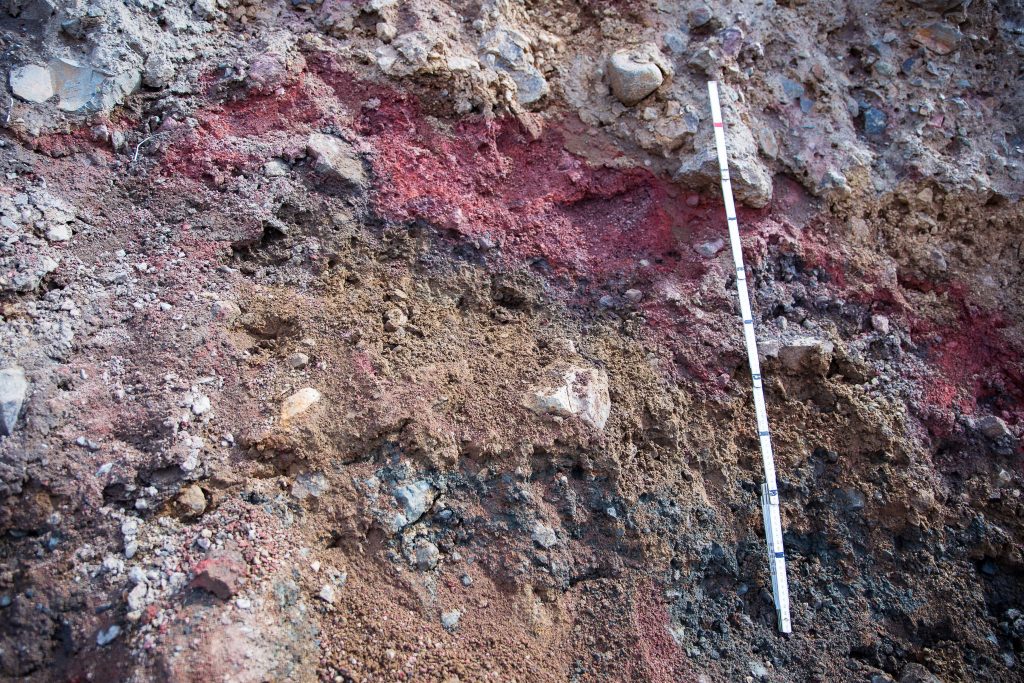
There were several factors at play in December 2020. Never before has as much
precipitation in such a short amount of time been measured in Iceland as was done the
day before the landslides, from December 14th – 18th it measured 570 mm. in
comparison, the annual precipitation in Reykjavík is around 860 mm (Pétur Magnússon,
2020). The big landslide fell from Botnabrún and spanned the whole way to
Stöðvarlækur. The landslide wound is around 200 metres wide (Dagný Friðjónsdóttir,
2020). The overall breadth of the landslide tongue was around 320 m and it was 435 m
long from the top of the fracture surface to the outer edge of the tongue. The mudslides
that fell in Seyðisfjörður are the biggest ones that have fallen in towns and cities in Iceland
(Natural Catastrophe insurance of Iceland, 2020). The area had not yet been evacuated
and it is incredibly fortunate that there were no casualties, because the destruction that
the landslide made was substantial.
Esther Hlíðar Jensen, GIS and Hydromorphology Specialist at the Icelandic
Meteorological Office, explains that the precipitation in the area higher up in the slope
had been in the form of snow so there had not been an estimate of an increased risk of
landslides. Furthermore, they did not estimate that the weakness of the edge would be as
deep as is turned out to be. Esther believes that this is almost a new type of a landslide
because the traditional landslides are bound to soil, but cumulative precipitation in a
waterway can snatch lose material. The danger estimate considers the inclination in
slopes, channels and how much lose material there is present. This new type of
catastrophic landslides reaches deeper, doesn’t only snatch with it earth from the surface
in a mudslide channel that has been collected through time, but the catastrophic landslide
reached down to sedimentary layers where a weakness had developed because of much
precipitation in a short amount of time. Deeper sedimentary layers are under normal
circumstances very stable, but there is a reason this landslide snatches so much material
(Katrín Ásmundsdóttir, 2020). Harpa Grímsdóttir group leader at the avalanche watch at
the Icelandic Meteorological Office, concurs with Esther that the landslides that had
fallen earlier in the week were of a different nature. “The studies that have already been
done are only preliminary studies, but they show a landslide wound that is up to 20 m
high and seems to reach very deep into the sedimentary layers that have been stable for
thousands of years. We did not expect a landslide of this magnitude and completely
underestimated the situation further out from Búðará where the landslide fell. We
expected landslides, for example at Búðará, but the readings of geological analysis had
not indicated any large prehistoric landslides in this area,” says Harpa (The Icelandic
Meteorological Office, 2020).
Hólmfríður Dagný Friðjónsdóttir (2020, December 19th). The wound after the big
landslide up to 200 metres (is. Sárið eftir stóru skriðuna allt að 200 metrar). RUV. Retrieved from: https://www.ruv.is/frett/2020/12/19/sarid-eftir-storu-skriduna-allt-ad-200-metrar.
Katrín Ásmundsdóttir (radio programmer). (2020). Noon – Mudslides and Christmas
postponed in the UK (is. Hádegið – Aurskriður og jólunum frestað á Bretlandi) [radio
show]. Ríkisútvarpið. Rás 1. December 22nd
. Retrieved from: https://www.ruv.is/utvarp/spila/hadegid/30715/94tf60.
Natural Catastrophe insurance of Iceland (is. Náttúruhamfaratrygging Íslands). (2020).
Seyðisfjörður, information concerning the catastrophe in December 2020 (is.
Seyðisfjörður, upplýsingar vegna hamfaranna í desember 2020). Retrieved from: https://island.is/seydisfjordur.
Pétur Magnússon (2020, December 19th). As much precipitation has never before been
recorded in Iceland (is. Aldrei mælst meiri úrkoma á Íslandi). Mbl.is. Retrieved from: https://www.mbl.is/frettir/innlent/2020/12/19/aldrei_maelst_meiri_urkoma_a_islandi/.
Icelandic Meteorological Office. (2020, December 22). The large landslide in Seyðisfjörður is the largest that has fallen in urban areas in Iceland. Retrieved from: https://www.vedur.is/um-vi/frettir/stora-skridan-a-seydisfirdi-su-staersta-sem-fallid-hefur-i-byggd-a-islandi.